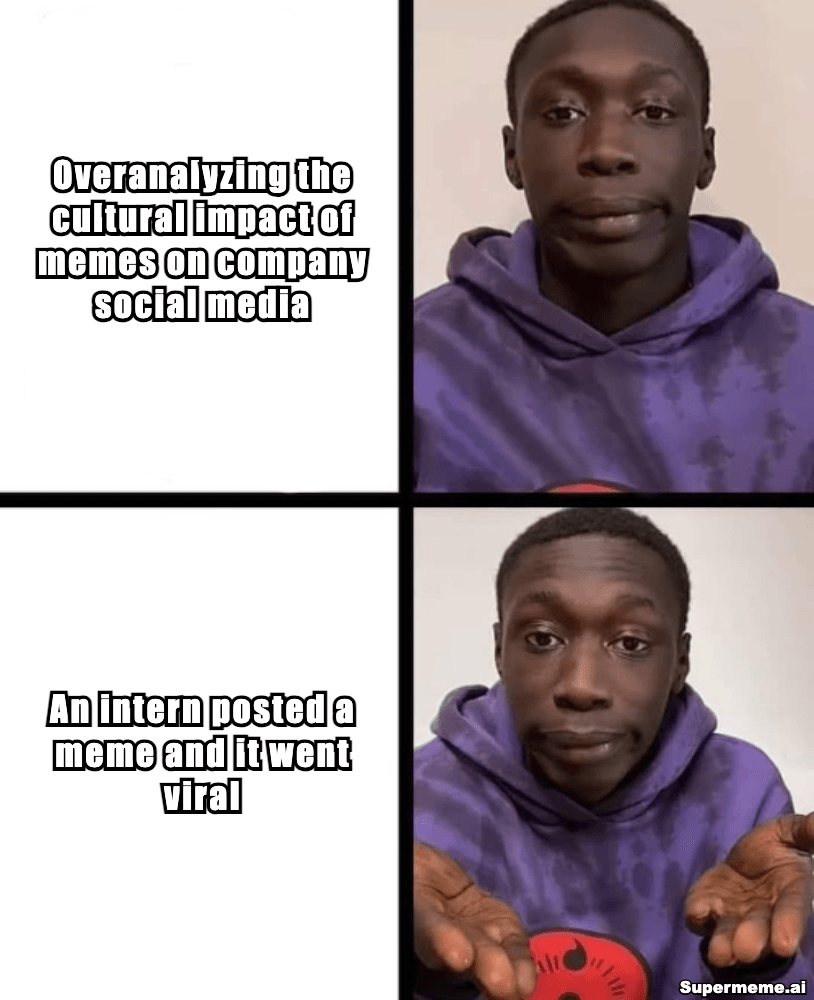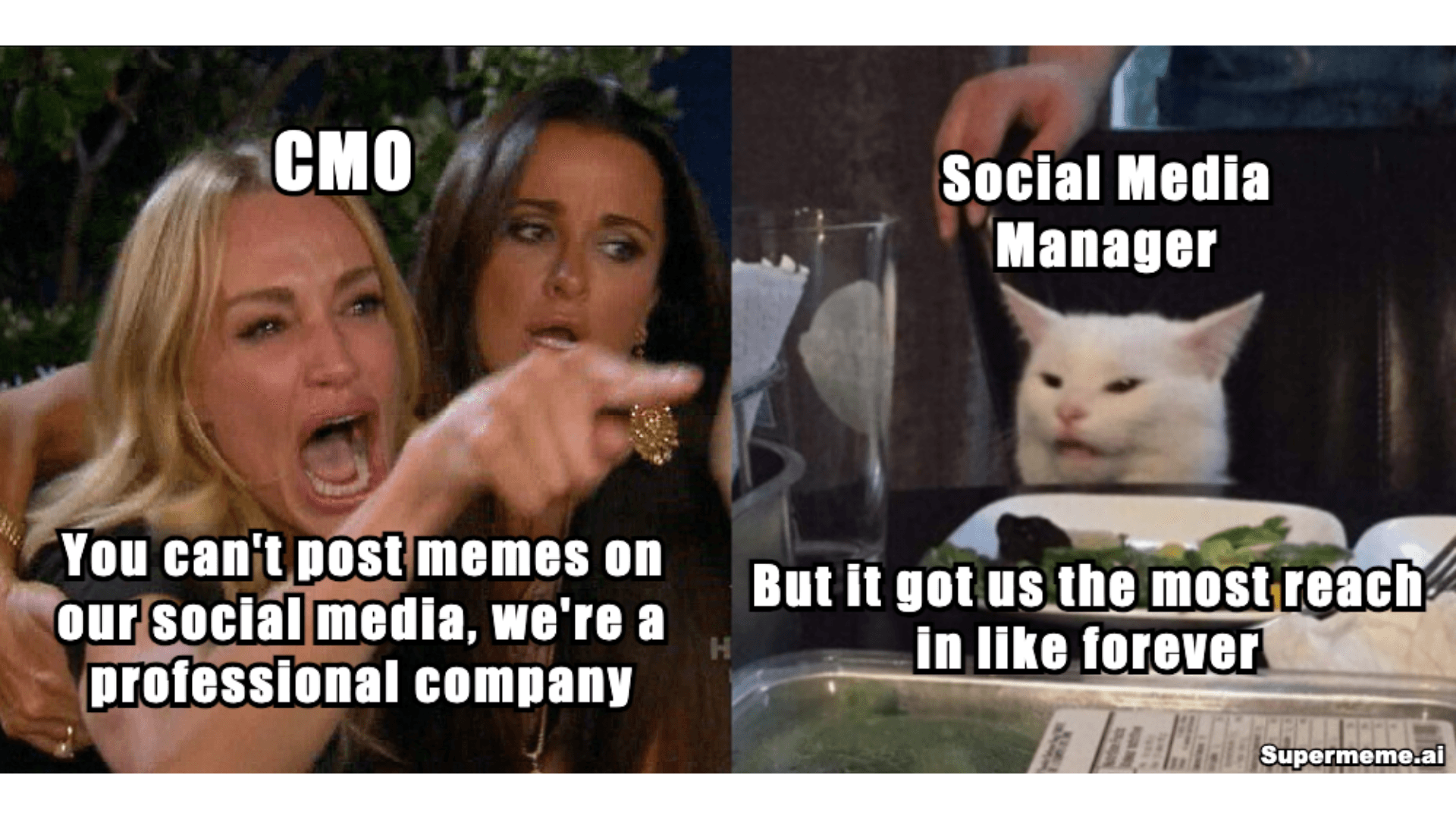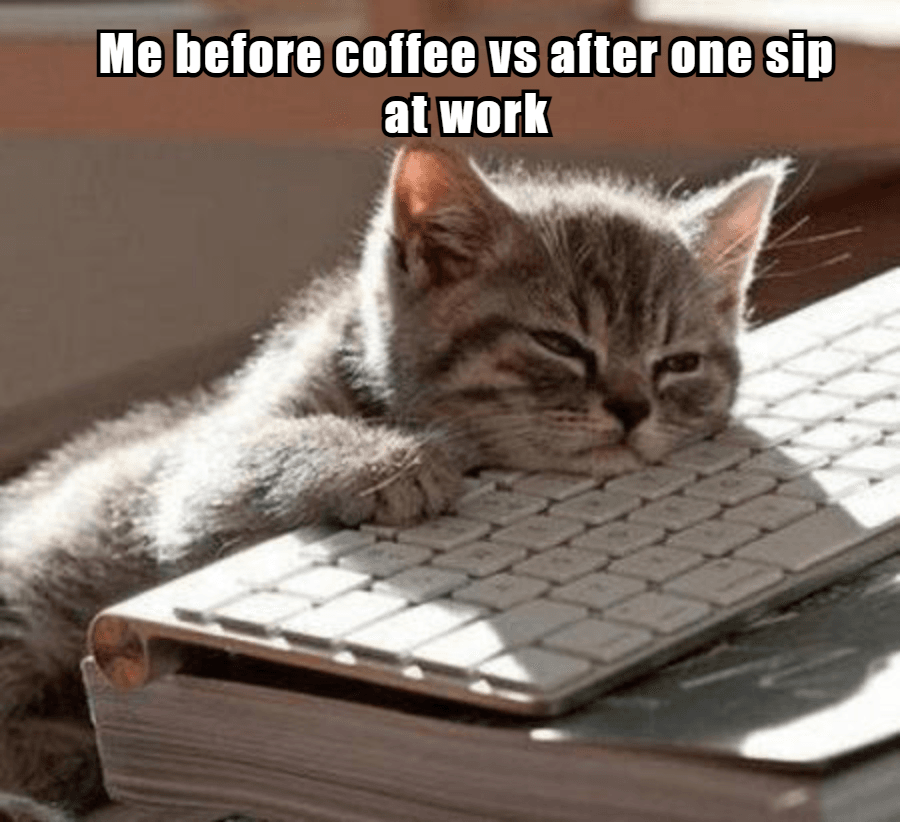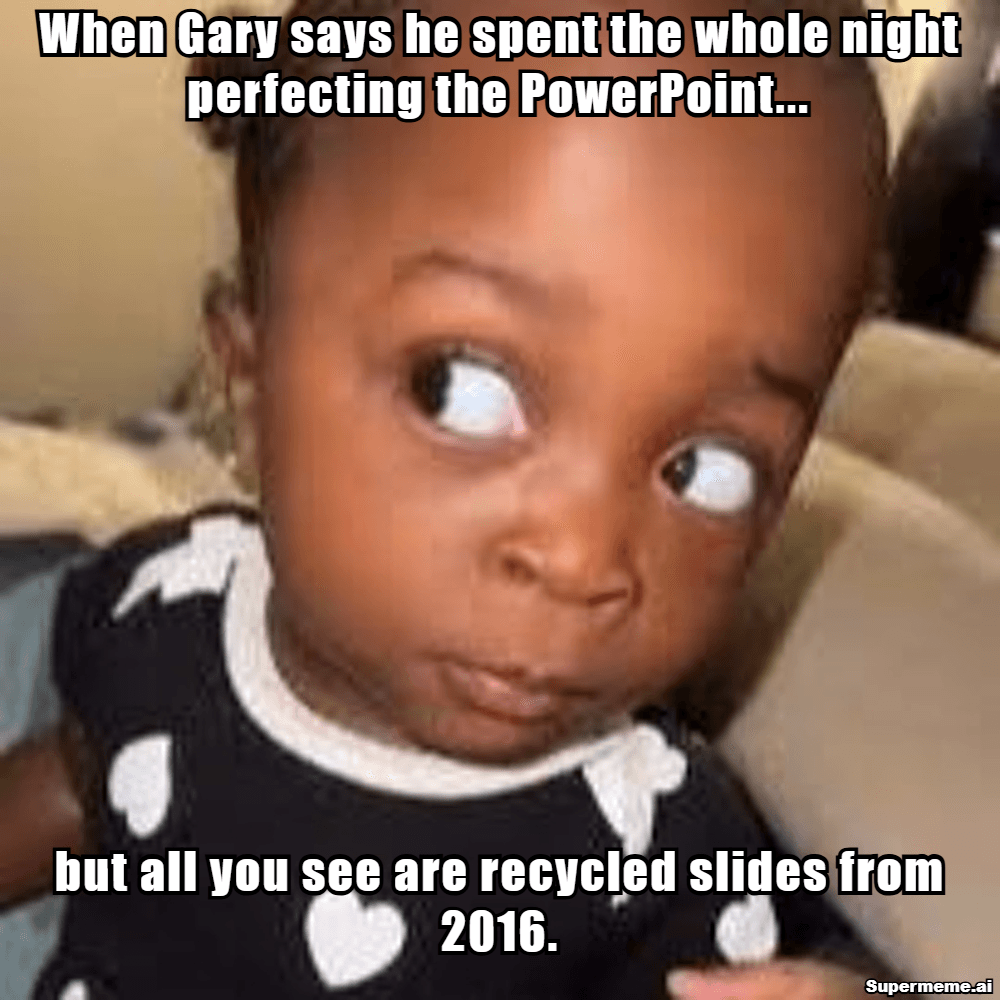Let's be real—social media marketing isn't what it used to be. The days of perfectly polished corporate posts and carefully crafted messaging are giving way to something more authentic, more relatable, and dare I say it, more meme-able.
When Acme Inc launched their social media strategy three years ago, they were playing it safe. Professional graphics, standard copy, occasional promotions. The results? Predictably mediocre. Then one Friday afternoon, their marketing intern posted a SpongeBob meme about the industry's biggest pain point. That single post outperformed their entire quarter's content in less than 24 hours.
The Untapped Power of Meme Marketing
Memes aren't just internet jokes—they're cultural currency. They communicate complex ideas through simple, relatable formats that trigger immediate emotional responses. When your audience sees a meme that resonates, they don't just scroll past—they stop, laugh, tag friends, and share. That organic engagement is marketing gold in an era of declining organic reach.

Think about it: while your meticulously designed infographic might get a polite like, a well-timed, relevant meme can create a genuine connection that says, "We get you. We're in this together."
Why Memes Work For Business (Even "Serious" Ones)
You might be thinking, "But our business is too professional for memes." That's what we thought too! But here's the revelation that changed our approach: memes aren't unprofessional—they're human.

Every industry has inside jokes, frustrations, and shared experiences. Banking, healthcare, B2B software—doesn't matter. There are meme-worthy moments everywhere, and the companies brave enough to acknowledge them stand out.
Consider these benefits:
Memes bypass mental advertising filters. People scroll past obvious marketing but stop for content that entertains.
They demonstrate cultural awareness. Using current meme formats shows you're tuned into what's happening now.
They humanize your brand. Nothing says "real people work here" like humor that reflects your audience's reality.
They're cost-effective. A viral meme can generate more engagement than expensive production content.
They encourage sharing beyond your follower base. People share memes that represent their experience, expanding your reach organically.
Creating Memes That Actually Work
Not all memes are created equal, and the line between relatable and cringe is thinner than you think. Here's our tried-and-tested approach:
Start with your audience, not the meme. What are their daily challenges? What industry quirks do they deal with? What would make them say "that's so true"?
We built a simple process:
Listen first. Monitor industry hashtags, forums, and comments to understand what your audience is already joking about.
Stay current. Use trending meme formats while they're still relevant.
Keep it authentic. If you don't naturally understand the meme, don't use it.
Test internally. If your team doesn't genuinely laugh, your audience probably won't either.
Move quickly. Meme relevance has a short half-life.
Real Success Stories
When Ryanair embraced meme marketing, they transformed from "budget airline" to "savage social media personality." Their TikTok followers don't just tolerate their marketing—they actively seek it out.
Duolingo's unhinged owl mascot memes have created a brand personality so distinct that people follow their accounts even if they don't use the app.
Even "serious" brands like MoonPie have used meme marketing to stand out in crowded markets. Their Twitter personality drove real sales increases through engagement alone.
Avoiding the Pitfalls
Meme marketing isn't without risks. The biggest mistakes we've seen:
Forcing it. Using meme formats without understanding their context is the fastest way to look out of touch.
Playing it too safe. Watered-down humor rarely lands. Authentic voice means occasional boldness.
Missing cultural context. Some memes have problematic origins or meanings. Always research before using.
Prioritizing trends over relevance. A perfectly executed meme that doesn't connect to your audience or brand is still a miss.
Starting Your Meme Marketing Journey
You don't need to transform overnight. Follow this practical process:
Find problems: Search Reddit using tools like Gummy Search to see what your audience is ranting about. Rants are a goldmine for meme ideas because they reveal genuine pain points and emotions.
Generalize situations: Take those specific complaints and generalize them into relatable situations that can form the foundation of your memes.
Match templates: Use these situations to find relevant meme templates and craft appropriate copy while keeping the context authentic to your audience's experience.
Create and deploy: File this research, create the meme, and for efficiency, consider using a meme generator like Supermeme to complete the process in seconds rather than hours.
The Future of Meme Marketing
We're not just building marketing strategies—we're creating cultural touchpoints that say: "We see you. We understand. We're in this together."
As algorithms increasingly prioritize authentic engagement, memes aren't just a fun addition to your strategy—they're becoming essential to cutting through the noise.
The brands that thrive won't be the ones with the biggest budgets, but those brave enough to show personality, share relatable moments, and occasionally risk being human in a sea of corporate content.
Are memes right for your brand? If you've ever laughed at work, the answer is probably yes. The question isn't whether you can afford to include memes in your strategy—it's whether you can afford not to.


